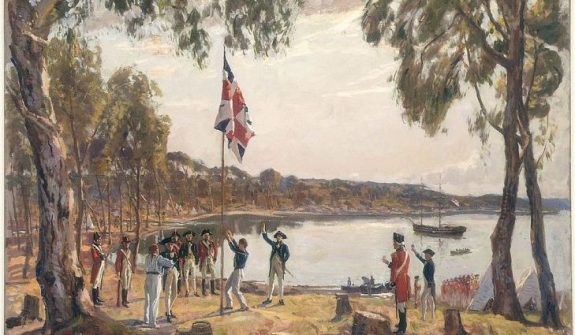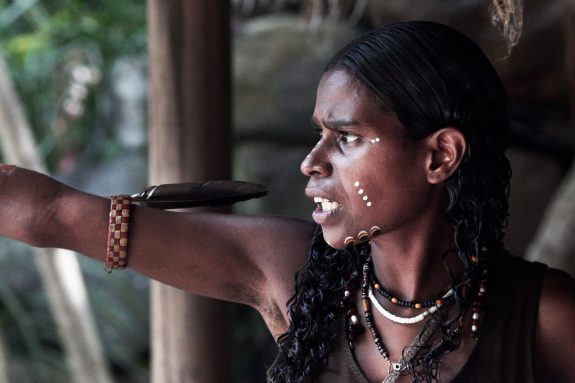Was Australia invaded or settled?

Was Australia invaded or settled?
This article was first drafted this time last year in response to a passionate debate around Australia Day on whether Australia was settled by the English, or invaded.
The view has long been held, hardly without question, that the English indeed settled in Australia in 1788. Many Indigenous Australians beg to differ; often quite vociferously around this time of year. Fuelled by emotion rather than evidence, they insist it was an invasion.
They may be right.
From a legal perspective there are a couple of arguments in their favour, the first of which takes us back to 1770 and everybody’s favourite explorer, James Cook. Our history books tell us of Cook’s every adventure. But not of his intentions.
We begin …
In 1770 under Customary Law and Maritime Law it was illegal to usurp, occupy or repopulate lands of First Nations and treaties with these peoples were hence the legal norm and …
Lieutenant (later Captain) James Cook had instructions to negotiate with the Natives and gain their consent to occupy land. From April to August 1770, without the consent of the Indigenous Peoples or consultation Captain James Cook landed at a number of sites on the eastern coast of Australia claiming it for the British Crown. On the 22 August 1770 on Possession Island off Cape York, Cook took possession of the whole east coast in right of his Majesty King George the Third (cited from The Other Side of the Coin by Tony Kamps).
But a treaty or any negotiation was, in Cook’s opinion, not a privilege to be afforded to ‘savages’ and he subsequently breached his instructions.
Before 1770, the construct of the Aborigine saw them positioned in the landscape as a savage: a subsequent depiction that evolved in the minds of European imagination. The English, especially, considered themselves well credentialed. As the first Englishman to encounter Aborigines, William Dampier instilled in other Englishmen’s minds the preconceptions about these people when he wrote that they were “the miserablest people in the world.” And the image of the Aborigine was to leave no impression of excitement or significance on Cook, merely accepting the Aborigines as Dampier had earlier reported. Cook had brought with him images of indigenous peoples as noble savages, largely the antithesis of Europeans. Cook was probably also influenced by the writings of Rousseau, whose saw native peoples as unadulterated by the evils of civilisation.
Cook and Joseph Banks themselves were to add “naked and treacherous: a collection of cowardly, unfriendly and vindictive savages belonging to the lowest order in creation.”
Whilst it is acknowledged that Cook had acted improperly towards the Indigenous occupants it eventually mattered not to his peers. By declaring the continent “no man’s land” (the doctrine of which was later to be referred to as terra nullius) the English found a legal lie to take custody of it.
Because the observable Aborigines did not grow crops and because Cook assumed there were no fishable rivers inland, he erroneously concluded that the land’s interior was empty. Banks, meanwhile, thought that the Aborigines would run away and abandon their rights to land. A totally stupid assumption, especially given that after an encounter with local people in Botany Bay Cook wrote that “all they seem’d to want was us to be gone.”
Regardless of Cook’s failure to negotiate a treaty or gain consent to occupy this new land, it became apparent shortly after the arrival of the First Fleet in 1788 that Aboriginal people were treated little more than impediments standing briefly in the way of inevitable white progress. The failings of Cook and the contravention of the aforementioned Customary Law and Maritime Law were conveniently ignored.
The second event takes us forward to 1841 and the case R. v. Bonjon in the Supreme Court of New South Wales before Willis J., 16 September 1841, Melbourne from where I’ll add further to the claim that the continent certainly was invaded. The following three paragraphs are a summary of the proceedings. Bear with me. They are complex.
Bonjon, a Wadora man, was charged with the shooting murder of Yammowing, of the Colijon people, at Geelong. The proceedings before Judge Willis began with evidence as to the capacity of the defendant to plead the jurisdiction of the court, and to plead guilty or not guilty. The court then heard argument on the question of whether it had jurisdiction to hear a charge of murder by one Aborigine of another.
Arguing against the court’s jurisdiction, Mr Redmond Barry, for Bonjon, said that there is nothing in the establishment of British sovereignty in this country which authorises the court to submit the Aboriginal natives to punishment for acts of aggression committed inter se. New South Wales was occupied by the British, he argued, rather than conquered or ceded. Occupation gave the Crown a right to the soil, but not to any authority over the Indigenous inhabitants as subjects, unless there be some treaty, compact or other demonstration of their desire to come under English law. This does not interfere with the right of the sovereign to punish Aborigines who attack the persons or property of British settlers, or the reverse. No statute states that Aborigines are British subjects, and there is no treaty or compact showing their submission to British authority; their assent was necessary. Nor is there any reciprocity between them and the Crown to render them amenable to the criminal law. It is impossible to apply the whole of that law to them. Aborigines have their own modes of punishment, under their own regulations. Their regulations, like those of all societies, extend to murder. The Aborigines live in self-governing communities. English law, then, was not the only law in the colony, and it could not be imposed on them by terror.
Mr Croke, the Crown Prosecutor, replied that it is lawful for a civilised country to occupy the territory of uncivilised persons, so long as they leave them sufficient land to enable them to acquire subsistence. As a consequence of such settlement, the common law of England was transferred to the Port Phillip District of New South Wales. All persons within that area owe a local allegiance to the Queen, and are bound by English law even for conflicts inter se. They are protected by the law, and bound to obey it. Sufficient land having been left for them, they have no original rights to the territory of Port Phillip, but merely an easement over the soil. Bonjon is as much amenable to English law as a British subject.
The argument from Mr Barry that New South Wales was occupied, not conquered, was founded on this claim upon by the defence:
On the shore appeared a body of savages, armed with spears, which, however, they threw down as soon as they found the strangers had no hostile intention.
This may have been a lie (in order to save his client), as what has been conveniently ignored is the fact that the spears were thrown down after shots were fired by the English. The local Aborigines, in throwing down their spears, were actually signalling defeat. Technically, this means that the land was invaded. The English were the aggressors as was confessed by the British Government not two years prior to this case, voicing the sentiments that:
You cannot overrate the solicitude of Her Majesty’s Government on the subject of the aborigines of New Holland. It is impossible to overrate the conditions and prospects of that unfortunate race without the deepest of commiserations. I am well aware of the many difficulties which oppose themselves to the effectual protection of these people, and especially those which must originate from the exasperation of the settlers, on account of aggression on their property, which are not less irritating because they are nothing else than the natural results of the pernicious examples set to the aborigines, and of the many wrongs of which they have been the victims. Still it is impossible that the Government should forget that the original aggression was our own. (My bold).
The small amount of ethnographic evidence I have uncovered suggests that from Day 1 there was aggressive behaviour from the English (even before their so-called settlement of Australia). This country was not peacefully settled as the school books tell us. The first Australians wanted the first British visitors gone. Through aggression from the outset, they got to stay.
They were, by the looks of it, invaders.
Like what we do at The AIMN?
You’ll like it even more knowing that your donation will help us to keep up the good fight.
Chuck in a few bucks and see just how far it goes!
Your contribution to help with the running costs of this site will be gratefully accepted.
You can donate through PayPal or credit card via the button below, or donate via bank transfer: BSB: 062500; A/c no: 10495969










